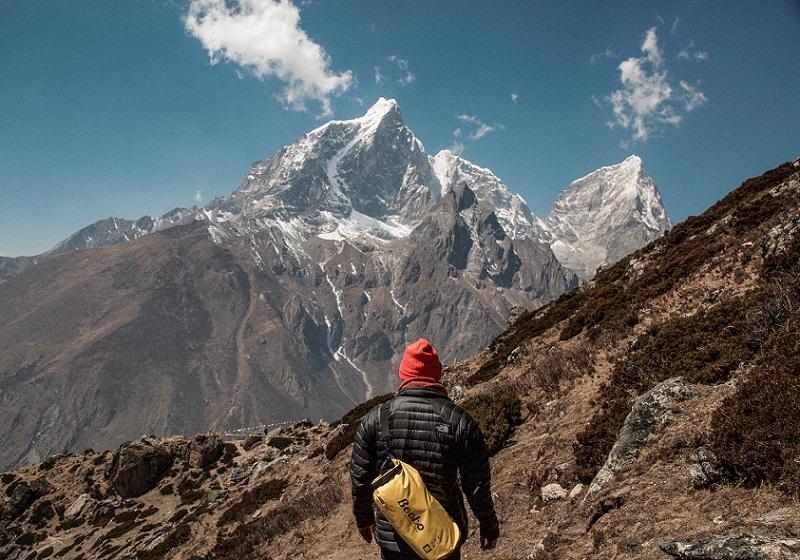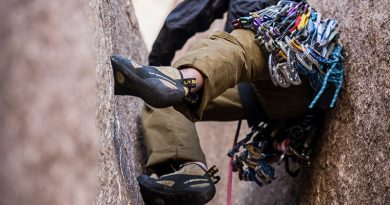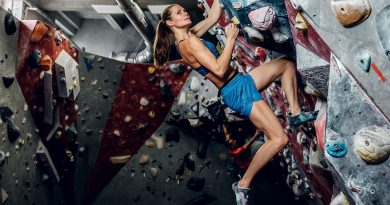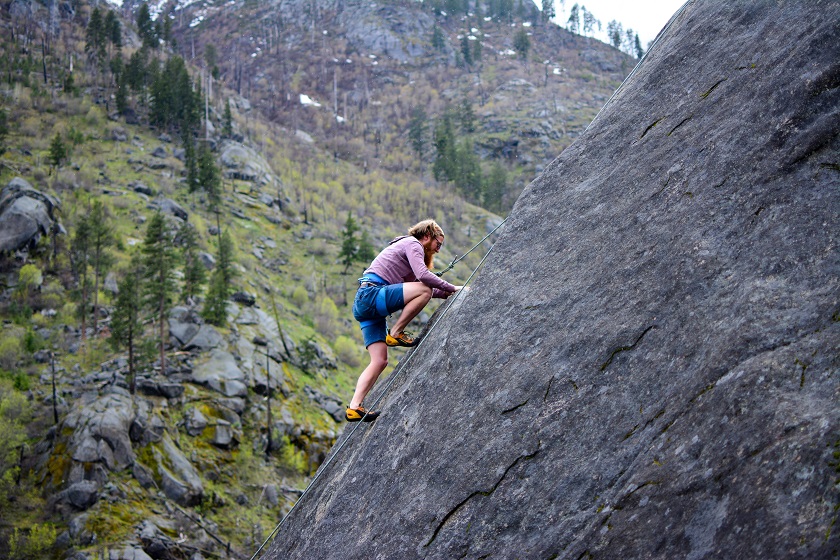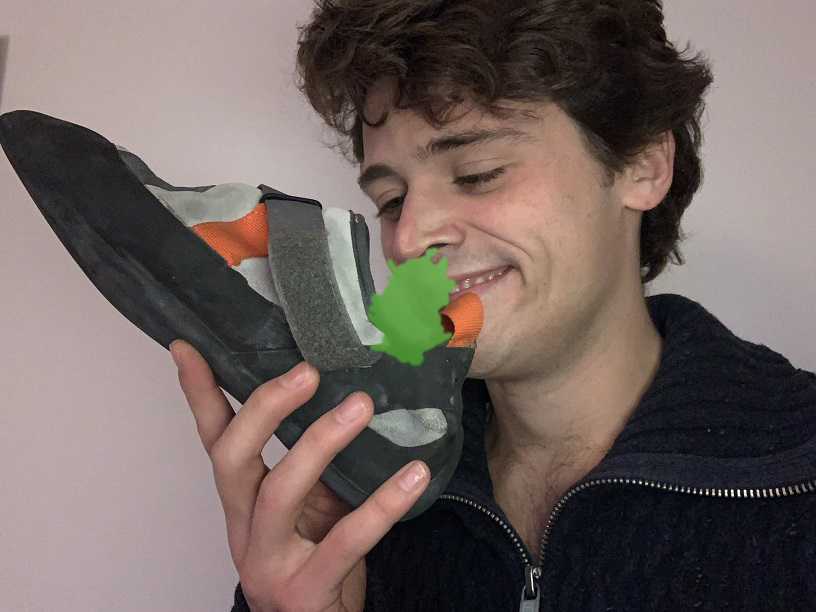Having the right number of quickdraws is key to the success of your climb. So how many should you have?
The answer is: it depends. The number of quickdraws you should have will vary depending on the type of climb you’re doing. Generally speaking, you’re going to want 6 to 12 quickdraws, depending on the type of climb. Shorter and outcrop routes may require only six while longer, sporting, or mountain routes can require as many as twelve, eighteen, or even twenty-four.
So how many quickdraws will you need for your climb? Let’s take a closer look at some of the factors that influence your quickdraw needs.
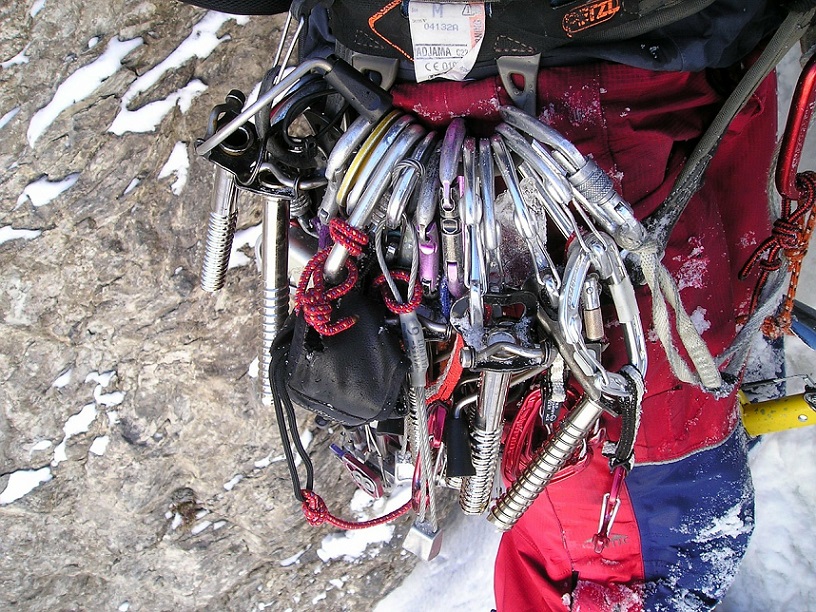
What Are Quickdraws?
Quickdraws are a type of specialized rock climbing equipment designed to enhance safety. Quickdraws are used to connect free-running ropes to anchors. In other words, quickdraws allow climbers to attach ropes to established protection.
These special tools are made up of two non-locking carabiners bound together by a sling and a keeper.
Correctly using quickdraws is essential to protecting climbers in case of a fall. For this reason, it’s important that quickdraws are correctly assembled—and that you use enough of them.
Determining how many quickdraws you’ll need, however, isn’t quite so simple.
Several different factors determine just how many quickdraws you will need.
To better understand these, let’s take a look at the different components that make up a quickdraw.
1. About the Carabiner of the Quickdraw
The type of carabiner used in the quickdraw is important—and can differ depending on the device you buy.
In fact, the type of carabiner your quickdraw comes equipped with can even determine which type of climb it’s best suited for.
Consider the following brief overview when selecting your quickdraws. For more detailed information about carabiners, you could also read our article about selecting the right carabiner.
Shape of the Carabiner
The shape of your carabiner determines how strong it is. It can also affect its gate clearance.
When it comes to carabiner shapes, three of the most common are: D-Shaped, asymmetrical D-shaped, and oval.
Though these shapes have a great effect on the utility of the carabiner, for now we’re only going to look at how it affects your quickdraw selection.
It does so in three ways:
- Gate Clearance
Gate clearance refers to how wide you can open your carabiner. Several factors can influence gate clearance—including carabiner shape. Keep in mind that the size of the carabiner can also have an impact.
Smaller gate clearance means that the quickdraw will be more difficult to use. It will also be more time-consuming, as you will have to spend longer periods attaching your quickdraw to ropes.
These gates come in three main shapes: straight-gate, bent-gate, and wire-gate. Straight-gate carabiners are most-commonly found on quickdraws and are popular for their great utility and ease of operation.
Bent-gate carabiners are also used on quickdraws, but only at the rope end.
- Strength
Keep in mind that different carabiner shapes have different strengths. If you’re looking for a quickdraw that will really hold up, consider one with a stronger carabiner. D-shaped carabiners typically boast superior strength.
- Weight of the Quickdraw
The most important influence the carabiner will have, however, is arguably its weight. Likewise, if you’re looking to determine just how many quickdraws you need, weight will become an extremely important consideration.
With this in mind, do note that D-shaped carabiners are weightier than other types. If you’re looking to reduce weight, one way to do it is to get a quickdraw with an oval-shaped carabiner. Many standard quickdraws strike a balance with an asymmetrical D-shape.
2. About the Sling Part of the Quickdraw
In determining which quickdraw you need—and how many to get—the type of sling used becomes important.
Slings of different lengths, widths, and materials exist on the market, so it’s important that you choose the right one for your climb.
Your sling selection has a great impact on the purpose of the quickdraw. For example, as we will see, sporting quickdraws usually come with a pre-made length that makes them best suited for the climb.
Other types of climbs, however, may allow for more flexibility for climbers to make their own quickdraws.
In this way, it’s important to understand how the following factors influence your quickdraw and the number of them you should make or buy.
- Length and Width
The length and width of the sling you use affect the weight of the quickdraw. And, as noted, the weight of your quickdraw can make it suitable or unsuitable for specific types of climbs.
It should go without saying that longer and wider slings are weightier. For this reason, sports climbers typically use slings that are a bit shorter and thinner than more traditional types of climbs.
This is also true of other forms of low-weight rock climbing.
Make sure that you keep in mind that as you reduce weight, you’re also making a tradeoff in strength. This is especially true if you’re attempting to make your own carabiner.
With this in mind, let’s take a look at some standard quickdraw sizes.
In terms of length, sport quickdraw slings usually range between 12-18cm, with traditional slings ranging up to 60cm.
As you can see, the difference in weight between these slings can be quite high.
This is compounded by the disparity in width across different slings.
Lightweight quickdraws, for instance, can have slings with a width as low as 8mm—whereas wider and weightier slings can be up to 25mm.
Because weight will affect just how many slings you can take on your climb, keep this information in mind as you work to make or select your sling.
- Sling Material
Another important factor in determining the weight of your sling is the material. To get the best combination of low weight and strength, consider choosing a quickdraw with a sling made of WHMW polyethylene.
Nylon and polyester are also popular sling materials, but they both fail to deliver in offering the same ratio of strength to weight.
With this fundamental information in mind, it’s time to take a look at just how many quickdraws you’re going to need for your climb.
As we’ve seen, the makeup of the quickdraw itself has a strong influence on its purpose. But are there any other considerations you should make when deciding how many quickdraws to purchase?
The short answer is yes. Here’s what:
Factors Affecting the Number of Quickdraws You Need
From the type of climb you’re doing to the weight of the quickdraw, there are several factors that determine how many you’re going to need.
Below, we’ll take an in-depth look at all the considerations you should make when determining how many quickdraws you’re going to need.
1. Climbing Distance and Wall Height
The first consideration you should make is the distance of the climb. This includes the height of the wall if you’re climbing indoors.
You’re going to want to make sure that you choose a number that allows you to travel comfortably.
But what does this mean?
Primarily, this will come down to the weight of your quickdraw.
2. Weight
As with many issues in rock climbing, weight is once again a determining factor.
The weight of your quickdraw fundamentally limits the number you can take for specific climbs. It also determines which quickdraws are even suitable for certain types of climbs.
If you’re experiencing issues with the weight of your quickdraws while climbing, it’s time to find a solution.
In doing so, one of the first things you should do is determine if your quickdraws are really necessary. By this, I mean, do you need as many as you’re bringing?
Below, I’ll answer this question in more detail as it relates to different forms of climbing, but for now let’s look at some general information.
For starters, if you’re planning to go on a long climb, you may expect weight to be more of an issue. If you overburden yourself, you’ll find it harder to make the moves you need to complete the climb.
Additionally, heavier quickdraws typically have heavier carabiners and longer slings. If you’re having trouble with the weight of your quickdraw, it could also mean that you’re having issues with its components.
For instance, if you’re sport climbing with a quickdraw that has a 60cm-long sling, you’ve probably run into more than just weight issues.
Because of this, it’s important that you determine if the type of quickdraw you’re using is actually appropriate for the climb.
Keep in mind, too, that these problems can add up. Case in point: if you bring too many of a too heavy of a quickdraw, you’re going to have a much harder time completing your climb.
Likewise, if you bring too few of too light a weight, you’re putting yourself at serious health and safety risks.
The good news is, I’ll walk you through the types and quantities of quickdraws you’ll need for your climbs in more detail below.
3. Number of Nuts and Cams You Need
But first, let’s take a look at how many nuts and cams you will need.
Again, it will depend on the type of climbing you plan on doing—and also what feels comfortable for you.
Some may prefer nuts and others cams. Still others may prefer having an even combination of both.
A traditional climbing gear set may contain as many as ten nuts and five cams. The size of all, of course, will depend on the climb and on your equipment.
Getting this set of nuts and this set of cams would be a great start to any rock climbers gear, enabling you to do most beginner level climbs, at the very least. They’ll also come in handy when you may decide to expand your rock climbing gear at a later moment as you take on longer routes.
So, How Many Quickdraws Should I Buy?
We’ve seen how different factors can influence your quickdraw selection.
But we still haven’t specifically answered the main question: how many quickdraws should you buy?
As we’ve seen, it really depends on the type of climbing you’re doing.
Let’s take a look at three types of climbing and how many quickdraws they require:
1. Trad Climbing
Good news for trad climbers:
You shouldn’t need more than twelve quickdraws.
And even this may be a high number. Some trad climbing routes may only require six, but it’s a good idea to bring a few extra anyway. And because some longer routes may require up to twelve, it’s always good to be prepared.
2. Multi-Pitch Climbing
Twelve is a good number for those looking to do multi-pitch climbing as well—but keep in mind that you’re going to want really lightweight quickdraws.
Weight will be an important issue here, but don’t forsake strength quality for cheap lightweight quickdraws. Make sure that you’re choosing products that offer the right balance of both.
You may be able to get by with ten quickdraws, but as stated, it’s always better to simply pick up two sets and go with twelve.
3. Sport Climbing
It’s typically recommended that sport climbers take at least twelve quickdraws.
If you can afford the weight, however, I would recommend taking even a few extra—just in case something happens to one of yours you are using.
If you’ve got lightweight quickdraws, this really shouldn’t be much of an issue. Even the heaviest of quickdraws aren’t that weighty, but this is especially true when considering the smaller pre-made equipment made for sport climbing.
Also, keep in mind that if you plan to do a longer route, you may need as many as eighteen or even twenty-four quickdraws. If this is the case, make sure that you’re bringing sport quickdraws that are optimized for this kind of route and weight.
Additionally, keep in mind that quickdraws are sold in sets of six. For this reason, it might be easier to consider the number of quickdraws you need in terms of sets.
If you’re going to need twelve quickdraws, for instance, you may decide to see it as you should buy two sets.
However you choose to think about it, make sure that you’re getting the appropriate number for your climb.
So what’s the bottom line?
Choosing the right number of quickdraws is intricately related to the type of climb you’re doing. Make sure that when selecting your quickdraws, you choose one that is optimized for your climb. Additionally, make sure to take a few extra—especially if you’re climbing long routes.
By doing so, you can stay prepared for any challenges you may face.


